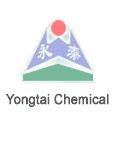Description
Many household and personal care products are formulated with an active oxygen-releasing materials to effect removal of stain and soil. Oxygen-releasing materials have an important limitation; their activity is extremely temperature-dependent. Temperatures in excess of 60 DEGC are normally required to achieve any bleach effectiveness in an aqueous wash system. Especially for cleaning fabrics, high-temperature operation is both economically and practically disadvantageous. Thus, bleaching activators have been applied in an object to activate bleaching reaction at low temperatures. These activators, also known as bleach precursors, ofen appear in the form of carboxylic acid esters or amides. In an aqueous liquor, anions of hydrogen peroxide react with the ester or amide to generate a corresponding peroxyacid which oxidizes the stained substrate. Commercial application of this technology is found in certain fabric bleaching detergent powders that mainly incorporating tetraacetylethylenediamine(TAED).TAED used for detergent industry is in granular form,free-flowing, and has several colors (mainly white,green,blue) to choose depending on users′choice.
Technical Information
Chemical Name: Tetra Acetyl Ethylene Diamine
Synonyms: TAED
Molecular Formula: C10H16O4N2
Molecular Weight:228
Product Properties |
Standard Specifications |
Content,% |
92±2 |
Bulk Density,g/L |
450-750 |
Particle Size Distribution,% |
On 1.700mm Max.1.0 Through 0.150mm Min.3.0 |
Moisture,% |
Max.2.0 |
Ferric,% |
Max.0.002 |
Cuprum,% |
Max.0.0004 |
Appearance |
White or color granules |
Packing |
25kgs in Kraft paper bags plus PE liner |
Applications
TAED is typically applied in domestic laundry detergents, automatic dish washing, bleach boosters, laundry soak treatments, to improve the washing performance.
TAED could be applied in textile bleaching to react with hydrogen peroxide in the bleach bath to produce a stronger oxidant. The use of TAED as bleach activator enables bleaching at lower process temperatures and under milder PH conditions. In pulp and paper industry, TAED is suggested to react with hydrogen peroxide to form a pulp bleaching solution. The addition of TAED into pulp bleaching solution results in a satisfactory bleaching effect.
Handling and Storage
Storage
·Store in a cool, well ventilated area away from all source of ignition and out of direct sunlight. Store in a dry location away from heat. Store at room temperatures.
·Keep away from incompatible materials. Keep containers tightly closed. Do not store in unlabeled or mislabeled containers. Never return unused product to storage container.
·Protect from moisture. Keep containers well sealed.
Handling
·Avoid contact with eyes, skin, and clothing. Use with adequate ventilation.
·Do not swallow. Avoid breathing vapors, mists, or dust. Do not eat, drink, or smoke in work area.
·Prevent contact with combustible or organic materials.
·Label containers and keep them tightly closed when not in use.
·Wash thoroughly after handling.
First-aid Measures
·Inhalation-Remove affected person to fresh air. Do not use mouth-to mouth resuscitation. Seek medical attention if effects persist.
·Eye contact-Flush eyes with running water for at least 15 minutes with eyelids held open. Seek specialist advice.
·Skin contact-Wash affected skin with soap and mild detergent and large amounts of water.
·Ingestion-Remove from exposure to fresh air immediately. If breathing is difficult, give oxygen. Do not use mouth-to-mouth resuscitation. Seek medical service immediately.
Shipping Information
·Proper Shipping Name: Tetra Acetyl Ethylene Diamine
·UN Number: Not applicable
·Hazard Class: Not regulated
·Labels: No information available
·Packing Group: 0
Please read the MSDS for this chemical before using. |




